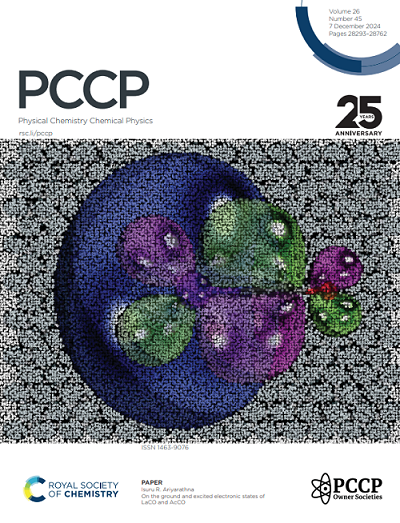High-Efficiency and Stable Perovskite Solar Cells via DL-Methionine-Enhanced Crystallization and Defect Passivation
IF 2.9
3区 化学
Q3 CHEMISTRY, PHYSICAL
引用次数: 0
Abstract
As an emerging photovoltaic technology, perovskite solar cells (PSCs) have become a research hotspot due to their excellent photoelectric conversion efficiency (PCE) and low-cost manufacturing process. Enhancing the crystallization quality of perovskite films and mitigating defects through material engineering is crucial for improving the performance of PSCs. In this study, a naturally occurring amino acid, DL-Methionine, is incorporated as an additive to enhance the crystallization quality and passivate defects in perovskite films. The results show that the appropriate concentration of DL-Methionine additive can not only improve the crystallization kinetics of perovskite but also reduce the defects of perovskite films through its coordination with perovskite ions, thereby reducing defect-assisted recombination. Finally, the optimized PSCs based on the DL-Methionine additive obtained the highest power conversion efficiency of 24.72%, significantly higher than those without the DL-Methionine additive (21.83%). Moreover, the stability of PSCs is significantly improved with the DL-Methionine additive. This work demonstrates the potential of DL-Methionine as an effective passivation agent for high-efficiency and stable PSCs.基于dl -蛋氨酸增强结晶和缺陷钝化的高效稳定钙钛矿太阳能电池
作为一种新兴的光伏技术,过氧化物太阳能电池(PSCs)因其出色的光电转换效率(PCE)和低成本的制造工艺而成为研究热点。通过材料工程提高过氧化物薄膜的结晶质量并减少缺陷对于提高 PSC 的性能至关重要。在本研究中,一种天然氨基酸--DL-蛋氨酸被用作添加剂,用于提高过氧化物薄膜的结晶质量和钝化缺陷。结果表明,适当浓度的 DL-Methionine 添加剂不仅能改善包晶石的结晶动力学,还能通过与包晶石离子的配位减少包晶石薄膜的缺陷,从而降低缺陷辅助重组。最后,基于 DL-蛋氨酸添加剂的优化 PSCs 获得了 24.72% 的最高功率转换效率,明显高于未添加 DL-蛋氨酸添加剂的 PSCs(21.83%)。此外,添加了 DL-蛋氨酸添加剂的 PSCs 的稳定性也得到了明显改善。这项工作证明了 DL-蛋氨酸作为一种有效的钝化剂在高效稳定的 PSCs 方面的潜力。
本文章由计算机程序翻译,如有差异,请以英文原文为准。
求助全文
约1分钟内获得全文
求助全文
来源期刊

Physical Chemistry Chemical Physics
化学-物理:原子、分子和化学物理
CiteScore
5.50
自引率
9.10%
发文量
2675
审稿时长
2.0 months
期刊介绍:
Physical Chemistry Chemical Physics (PCCP) is an international journal co-owned by 19 physical chemistry and physics societies from around the world. This journal publishes original, cutting-edge research in physical chemistry, chemical physics and biophysical chemistry. To be suitable for publication in PCCP, articles must include significant innovation and/or insight into physical chemistry; this is the most important criterion that reviewers and Editors will judge against when evaluating submissions.
The journal has a broad scope and welcomes contributions spanning experiment, theory, computation and data science. Topical coverage includes spectroscopy, dynamics, kinetics, statistical mechanics, thermodynamics, electrochemistry, catalysis, surface science, quantum mechanics, quantum computing and machine learning. Interdisciplinary research areas such as polymers and soft matter, materials, nanoscience, energy, surfaces/interfaces, and biophysical chemistry are welcomed if they demonstrate significant innovation and/or insight into physical chemistry. Joined experimental/theoretical studies are particularly appreciated when complementary and based on up-to-date approaches.
 求助内容:
求助内容: 应助结果提醒方式:
应助结果提醒方式:


